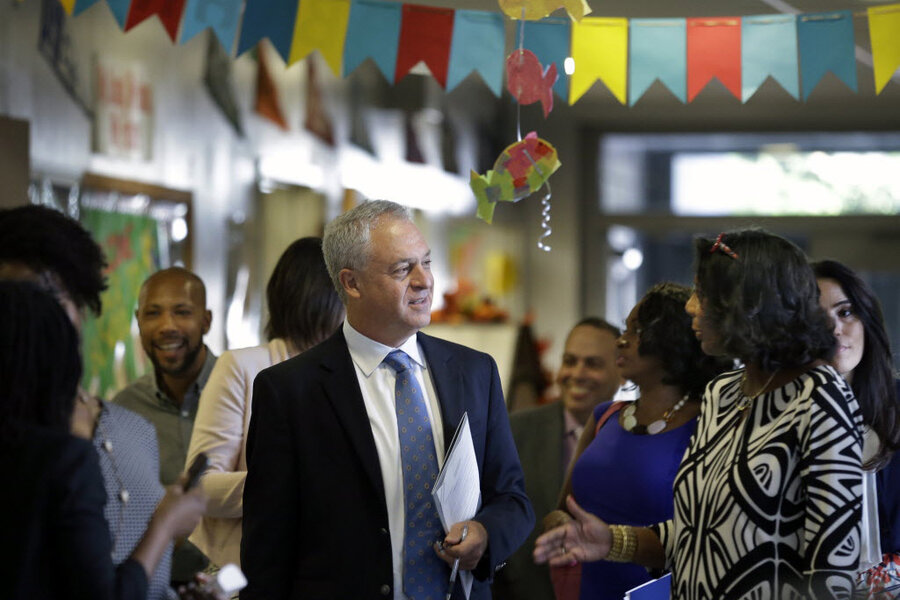Newark's $200 million education experiment: Who are the winners?
Loading...
Five years ago this week, Facebook founder and CEO Mark Zuckerberg started the school year with a historic $100 million gift to the struggling Newark, N.J., school district, part of an ambitious reform plan he’d developed alongside then-Mayor Cory Booker and New Jersey Gov. Chris Christie (R), now a presidential hopeful: with $200 million total, how quickly could the power trio transform a city’s failing schools? Newark is still waiting for an answer, but thanks to an Associated Press investigation released today, one thing is clear: it takes more than five years.
Fixing Newark’s schools posed an enormous challenge: citing corruption and low performance, the state had taken over in 1995, but not much changed in the next fifteen years. But Booker and Christie’s goals were even more far-reaching: to convince skeptics of the new, business-minded school reform that its techniques could rapidly improve failing schools, according to a 2014 essay by New Yorker writer Dale Russakoff. They even accompanied Zuckerberg to "The Oprah Winfrey Show" to announce his donation to Newark’s 48,000 K-12 students.
As AP reports, the goal to expand charter schools has certainly succeeded: in the five years since reform got underway, the number of Newark students attending a charter has more than doubled, to 48 percent.
Charter schools are publicly-funded and privately-run, and the charter movement claims they’re a great way to innovate without the hassle of overhauling a complete district system, with its miles of paperwork, bureaucracy, and teacher union regulations. They were first promoted as something like "lab schools" where fresh ideas could be tested, then implemented wholesale, if they proved successful. Advocates say charters are key to closing the nation’s shameful educational inequalities, particularly between poor or minority students and their white or wealthier peers.
Charters’ equally-impassioned critics believe they do the opposite of leveling the playing field, by further robbing cash-strapped public schools of per capita funding and holding on to a city’s most capable kids, while others languish in increasingly homogeneous traditional schools.
The numbers suggest that Newark has made some progress: between 2011 and 2012, the graduation rate has climbed, and Superintendent Christopher Cerf, who calls the donations “enormously productive and beneficial,” says that poorly-rated teachers are leaving the district.
Standardized test scores, though, are mixed: some up since 2010, some down.
Harder to quantify is the outrage many residents felt at the reform’s top-down, heavy-handed approach. Activists accused the reform of bulldozing community concerns: former superintendent Cami Anderson, for instance, who resigned in June, reorganized the district to replace traditional neighborhood schools, where enrollment was based on a students’ address, with an admissions lottery system. In 2014, 77 members of the clergy sent a letter to Governor Christie, calling his attention to Newarkers’ “venomous” feelings about reform and the “moral imperative” to let citizens have their say, according to Ms. Russakoff.
Her profile for the New Yorker quotes Christie as explaining, “We have to grab this system by the roots and yank it out and start over” – work that takes time. Newark may have to wait a little longer to see the results of its philanthropic overhaul.
This report contains material from the Associated Press.






